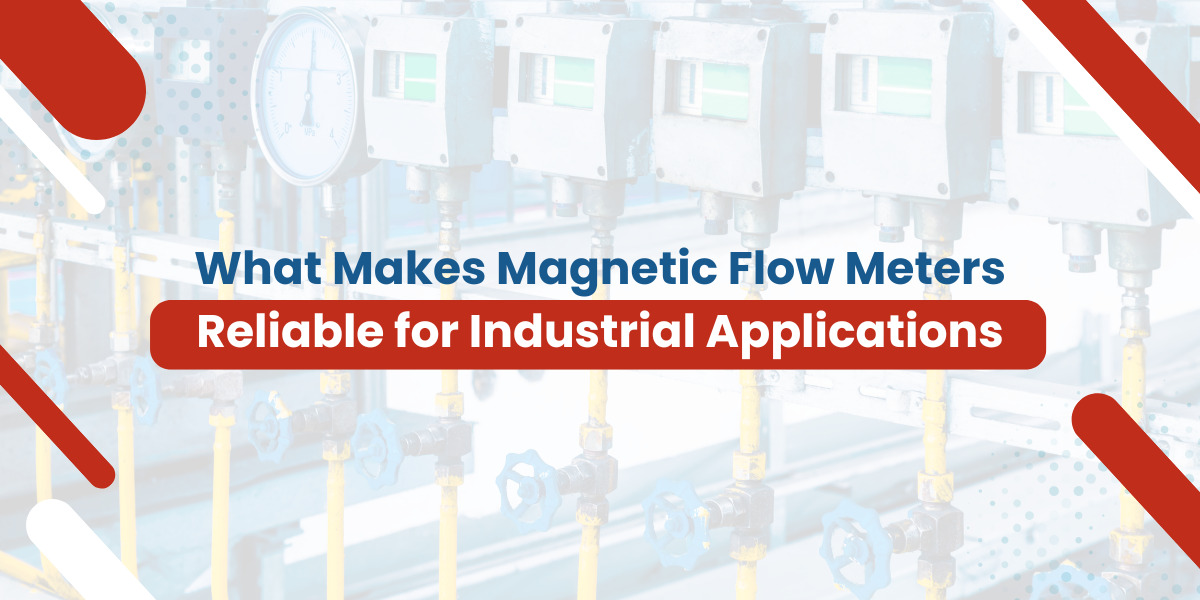Virtuoso Projects & Engineers Pvt Ltd

What Makes Magnetic Flow Meters Reliable for Industrial Applications
Magnetic flow meters deliver stable and accurate flow readings for conductive liquids in real-world plant conditions. Their contact-free measurement path, simple construction, and consistent performance make them a trusted choice for operations teams across industries that need dependable data without frequent maintenance. This article explains why magnetic flow meters are reliable in industrial use and how Virtuoso Projects and Engineers (VPEL) supports selection and deployment.
Why reliability matters
- Uptime and safety: Downtime from faulty readings can stall production and raise safety risks. Reliable measurement keeps pumps, valves, and dosing under control.
- Consistent quality: Stable flow control helps maintain batch quality in water treatment, food lines, and chemical dosing.
- Lower lifecycle cost: Fewer moving parts, less wear, and easy verification reduce service visits and spares.
How magnetic flow meters work
Magnetic flow meters measure volumetric flow using the principle of induction. As a conductive liquid passes through a magnetic field inside the meter tube, a voltage is generated and picked up by electrodes. That signal is proportional to flow velocity. Because there are no internal obstructions, the meter does not add pressure drop, and the measurement stays stable across a wide range of flows.
Core design features that improve reliability
- No moving parts: With only a flow tube, liner, and electrodes in contact with the liquid, there is little mechanical wear. This is ideal for abrasive slurries and liquids with solids.
- Obstruction-free bore: The straight-through path reduces clogging and build-up and keeps pressure loss very low, even at higher flow rates.
- Liner and electrode options: PTFE, PFA, rubber, and ceramic liners, plus electrode materials like stainless steel, Hastelloy, or platinum, allow correct material pairing for corrosive or abrasive fluids.
- Stable zero and diagnostics: Modern transmitters provide auto-zeroing, signal filtering, electrode coating detection, empty pipe detection, and grounding checks to maintain accuracy in daily operation.
- Broad sizing range: From small dosing lines to large process mains, sizing can keep slurry velocity above solids-settling limits while controlling wear.
Where magnetic flow meters excel
- Water and wastewater: Handles dirty water and sludge without clogging, supports plant inflow, process lines, and discharge monitoring.
- Food and beverage: Hygienic designs with clean-in-place support and smooth bores for syrups, dairy, and beverages.
- Chemical processing: Corrosion-resistant liners and electrodes for acids, alkalis, and solvent blends that are conductive.
- Mining and minerals: Measures abrasive slurries with sand and ore, keeping readings stable when piped at the right velocity.
What drives trustworthy accuracy
- Conductivity requirement: Works on conductive liquids such as water, slurries, wastewater, and many chemicals. Non-conductive fluids like oils are not suitable.
- Correct installation: Full pipe, proper grounding, straight runs as per the maker’s guidance, and correct electrode orientation reduce noise and drift.
- Signal quality: Modern transmitters use advanced excitation and digital processing to filter electrical noise and maintain repeatable readings.
- Routine verification: In-situ meter verification and simple calibration checks keep instruments in spec without removing them from the line.
Advantages over other meter types
- No pressure loss from the meter body as there is no obstruction in the line.
- Immune to fluid density, viscosity, and temperature changes within the specified range.
- Minimal maintenance compared to mechanical meters that rely on moving parts.
- Better performance on slurries and corrosive liquids than many mechanical alternatives.
Practical tips for longer service life
- Pick the right liner and electrode for the fluid and temperature.
- Size the meter so slurry velocity stays above solids-settling limits but within erosion limits.
- Ensure proper grounding and use grounding rings on non-conductive piping.
- Keep a short maintenance checklist: visual inspection, zero check, electrode coating check, and verification report for audits.
- Log conductivity, temperature, and any process changes to aid troubleshooting.
Common questions, answered
- Can they measure oils or pure solvents: No, magnetic flow meters need conductive liquids.
- Do they add pressure drop: The bore is open, so the added pressure drop is negligible.
- Are they suitable for very low flows: Yes, within specified minimum velocity; micro-flow applications may need specialised designs.
- What about scaling or coatings: Diagnostics can flag coating, and material choice plus periodic cleaning helps avoid buildup.
VPEL support for selection and deployment
Virtuoso Projects and Engineers (VPEL), an authorised distributor, helps plants select magnetic flow meters based on fluid conductivity, temperature, abrasiveness, corrosion risk, line size, and installation constraints. The team supports site surveys, sizing, material selection, commissioning, and lifecycle service to ensure dependable readings and documented compliance for audits. For product guidance and application fit, explore the transmitters section and connect with the VPEL team.
Applications to consider with VPEL
- Raw water intake and treated water output monitoring.
- Wastewater aeration and sludge lines.
- Chemical dosing and corrosive transfer lines.
- Syrups, beverages, and CIP utilities.
- Mining slurry transport and thickener underflow.
About VPEL
Virtuoso Projects and Engineers (VPEL) supplies process measurement solutions for Indian industries with a focus on practical performance, quick support, and long-term reliability. To discuss the right magnetic flow meters for plant needs, visit the VPEL transmitters page.


